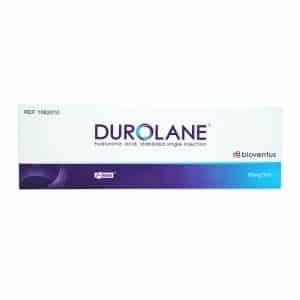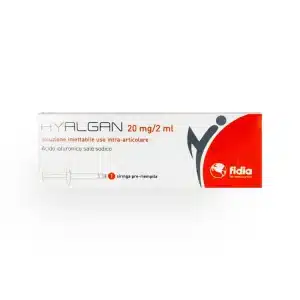Cartilage health is crucial in maintaining joint function and preventing osteoarthritis (OA). According to a comprehensive review, OA affects approximately 54.4 million adults in the United States, with the knee being the most commonly affected joint. Factors such as mechanical stress, genetics, and nutrition contribute to OA. In this context, the hyaluronic acid (HA) injection treatment and viscosupplementation have gained attention.
Durolane and Monovisc are both viscosupplementation options. Durolane is a cross-linked HA preparation that enhances joint lubrication and reduces pain. Meanwhile, Monovisc is a single-use agent containing high-molecular-weight HA. Both products effectively relieve joint pain due to OA and other cartilage-related issues. However, their differences warrant closer examination.
In this article, we will explore the benefits, effectiveness, and considerations of using Durolane and Monovisc for cartilage health to guide readers toward informed decisions.
Key Takeaways
- Durolane and Monovisc help with knee pain by acting like smooth oil in the joint. They last up to six months.
- Both are safe but might cause mild pain or swelling where the shot was given.
- Studies show they work well for easing pain and helping knees move better. Yet, more research is needed to see long-term effects on cartilage.
- Getting either treatment means only needing a few doctor visits for half a year.
- The choice between Durolane and Monovisc may depend on personal health details or how much they cost.
About: Medical Spa RX provides medical practices with premium products at the best prices. If you’re looking to buy Durolane wholesale for your practice, the sales representatives at Medical Spa RX can give you guidance.
Introduction to Durolane and Monovisc

Viscosupplements are treatments for knee osteoarthritis. They include hyaluronic acid injections like Monovisc and Durolane, which help manage joint pain and improve knee function.
Durolane’s generic name, sodium hyaluronate, has crosslinked to boost its effect on pain and movement. Studies have shown that it improves the lives of those with knee osteoarthritis, causing only mild side effects that don’t last long.
Though a bit different in its composition, Monovisc offers similar benefits. Both fit into a broader treatment plan of injection therapy with few adverse reactions reported by users.
Cartilage health is critical in managing osteoarthritis. This condition wears down cartilage, leading to pain and less movement. Durolane and Monovisc are treatments that help keep the synovial fluid healthy.
Composition and Mechanism of Action

- Durolane: It is composed of a unique form of crosslinked hyaluronic acid called NASHA (Non-Animal Stabilized Hyaluronic Acid). This high-purity hyaluronic acid mimics the natural synovial fluid found in joints, providing lubrication and cushioning to reduce pain and improve movement. Its crosslinked structure allows for a longer-lasting effect, making it effective with a single injection.
- Monovisc: This treatment contains a non-crosslinked, high-molecular-weight hyaluronic acid derived from bacterial fermentation. This hyaluronic acid closely resembles the body’s own joint fluid, helping to lubricate and cushion the knee joint. Monovisc is designed to provide relief with a single injection, improving joint function and reducing pain over time.
Clinical Efficacy

When evaluating the clinical efficacy of Durolane and Monovisc, we consider evidence from clinical trials and their impact on pain relief, functional improvement, and long-term cartilage health.
- Durolane (DUROLANE SJ): A prospective study assessed the clinical changes in patients with rhizarthrosis after a single injection of Durolane SJ. The trial evaluated physical examination, Visual Analog Scale (VAS) scores, Quick Disabilities of the Arm, Shoulder, and Hand (Quick-DASH) questionnaire, and biomechanical parameters. Although this study focused on rhizarthrosis, it provides insights into Durolane’s effectiveness.
- Monovisc: Monovisc, the first FDA-approved single-injection hyaluronate from a non-animal source, has demonstrated safety and effectiveness in treating knee osteoarthritis (OA). A pivotal phase III clinical trial enrolled 369 patients with OA of the knee and evaluated joint pain and mobility.
Comparison of Efficacy in Pain Relief and Functional Improvement
Both Durolane and Monovisc have shown efficacy in pain relief and functional improvement. Durolane’s crosslinked hyaluronic acid structure may provide slightly longer-lasting results, while Monovisc offers comparable benefits with a different composition. Patients report significant improvements in pain and mobility with both treatments, making them effective options for managing knee osteoarthritis.
Long-term Effects on Cartilage Health
While both products address immediate symptoms, their impact on long-term cartilage health remains an essential consideration. Further research is needed to assess their effects beyond the initial treatment period.
Practical Considerations
Treatment Protocols
- Durolane: Typically administered as a single injection, Durolane offers convenience for patients and healthcare providers. The procedure is straightforward, minimizing clinic visits and patient discomfort.
- Monovisc: Monovisc also provides a single-injection option, simplifying treatment. However, some clinicians may prefer a multi-injection approach based on individual patient needs.
Patient Satisfaction and Adherence
Patients generally report high satisfaction with both Durolane and Monovisc due to the convenience of single injections. Adherence to follow-up and post-treatment care is crucial to maximize benefits and monitor progress.
Cost Comparison
- Durolane: While Durolane’s single injection may seem cost-effective initially, consider the overall treatment duration. Fewer injections mean fewer clinic visits, potentially offsetting the initial cost.
- Monovisc: Monovisc’s single injection may have a higher upfront cost but eliminates the need for additional visits. Clinicians should weigh this against patient convenience and overall expenses.
Duration of Relief and Need for Repeat Injections
Durolane and Monovisc provide pain relief and improved function for approximately six months. The need for repeat injections depends on the patient’s response and the severity of osteoarthritis. Regular follow-up with a healthcare provider helps determine the appropriate timing for subsequent treatments.
Conclusion
Durolane and Monovisc play significant roles in keeping knees working well for people with osteoarthritis. Both offer relief from pain – lasting up to six months! Yet, they’re different: Durolane interacts less with other drugs than Monovisc does.
People also see them differently, with Monovisc getting slightly better scores online. So, picking the right one might hinge on personal health specifics or cost. Either way, these treatments allow for more active days without knee pain slowing folks down.
FAQs
1. What are Durolane and Monovisc?
Durolane and Monovisc are treatments for cartilage health, often used in cases of osteoarthritis.
2. How do they work on cartilage health?
Durolane and Monovisc supplement the natural hyaluronic acid found in joints, which helps maintain healthy cartilage.
3. Are there significant differences between Durolane and Monovisc?
While both aim to improve joint health, the main difference lies in their formulation—Durolane is a single-injection treatment, while Monovisc involves multiple injections over time.
4. Which one is better for me – Durolane or Monovisc?
The choice between Durolane and Monovisc depends on individual patient needs, medical history, and doctor’s recommendations.
References
Peck, J., Slovek, A., Miro, P., Vij, N., Traube, B., Lee, C., Berger, A. A., Kassem, H., Kaye, A. D., Sherman, W. F., & Abd-Elsayed, A. (2021). A comprehensive review of viscosupplementation in osteoarthritis of the knee. Orthopedic Reviews, 13(2). https://doi.org/10.52965/001c.25549
Drugs.com. (n.d.). Durolane vs. Monovisc: Drug comparison. Retrieved July 29, 2024, from https://www.drugs.com/compare/durolane-vs-monovisc
Ben-Galim, P., & Greisman, D. (2024). A comprehensive review of viscosupplementation in osteoarthritis of the knee. Orthopedic Reviews, 16(1), 25549. https://doi.org/10.4081/or.2024.25549





















